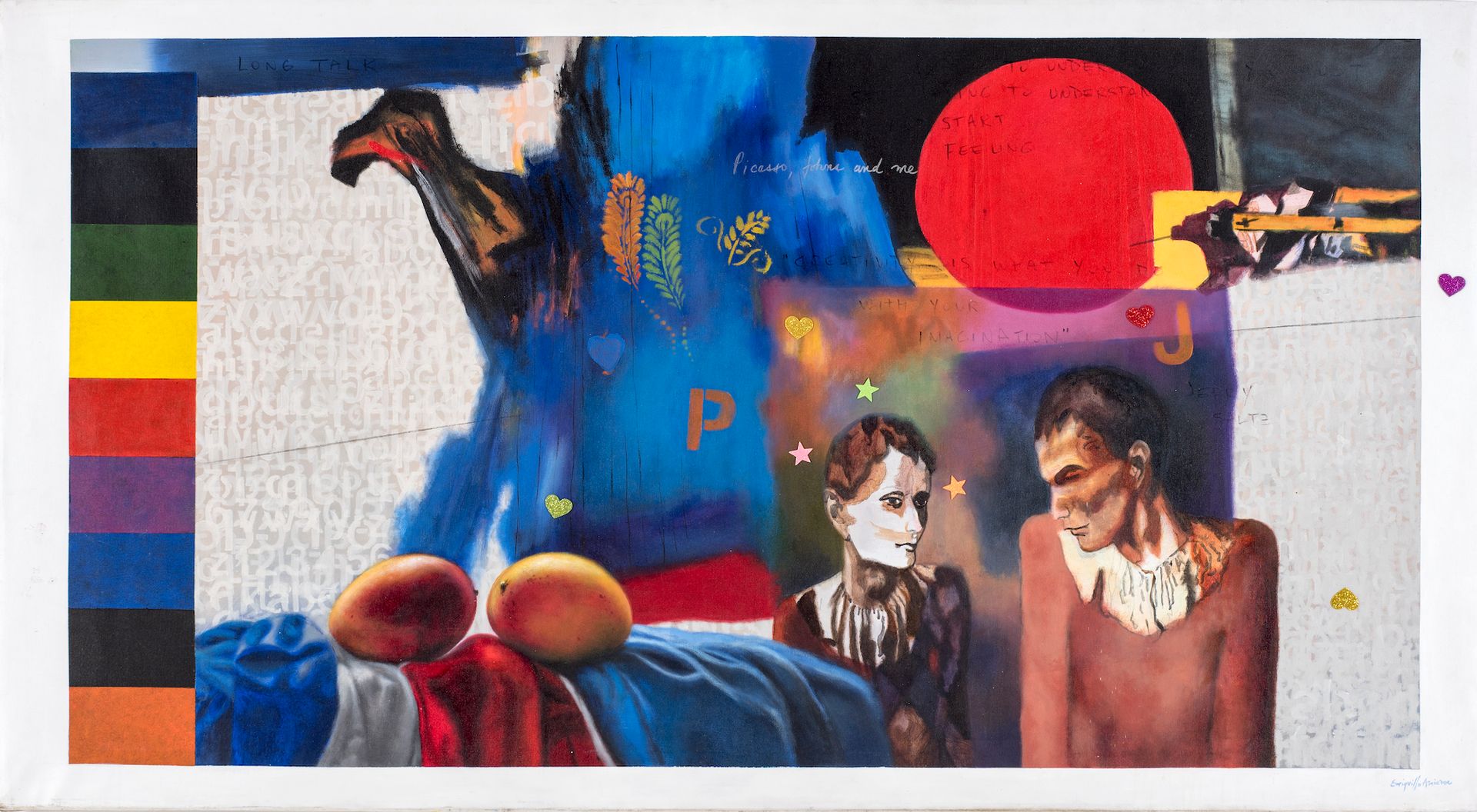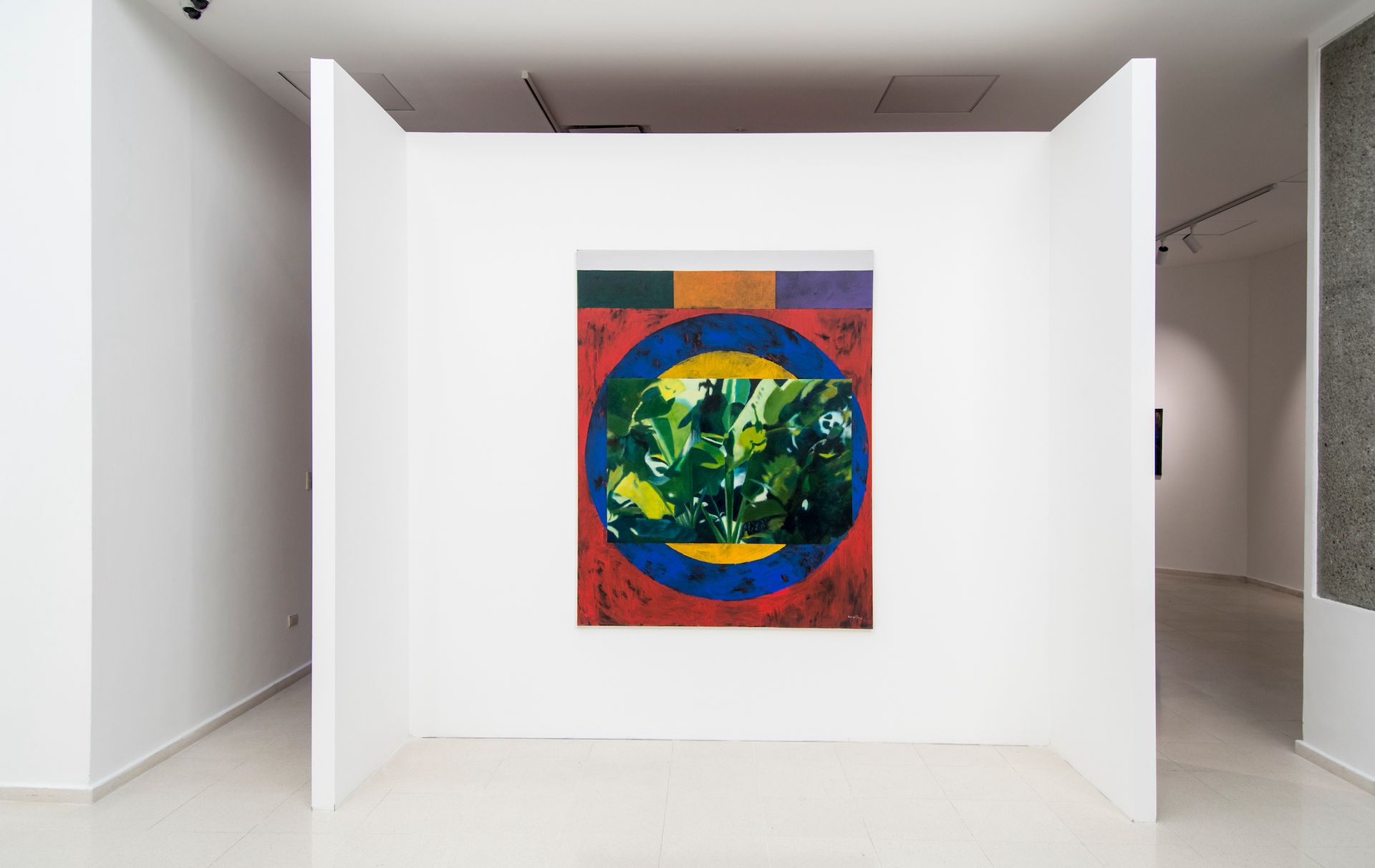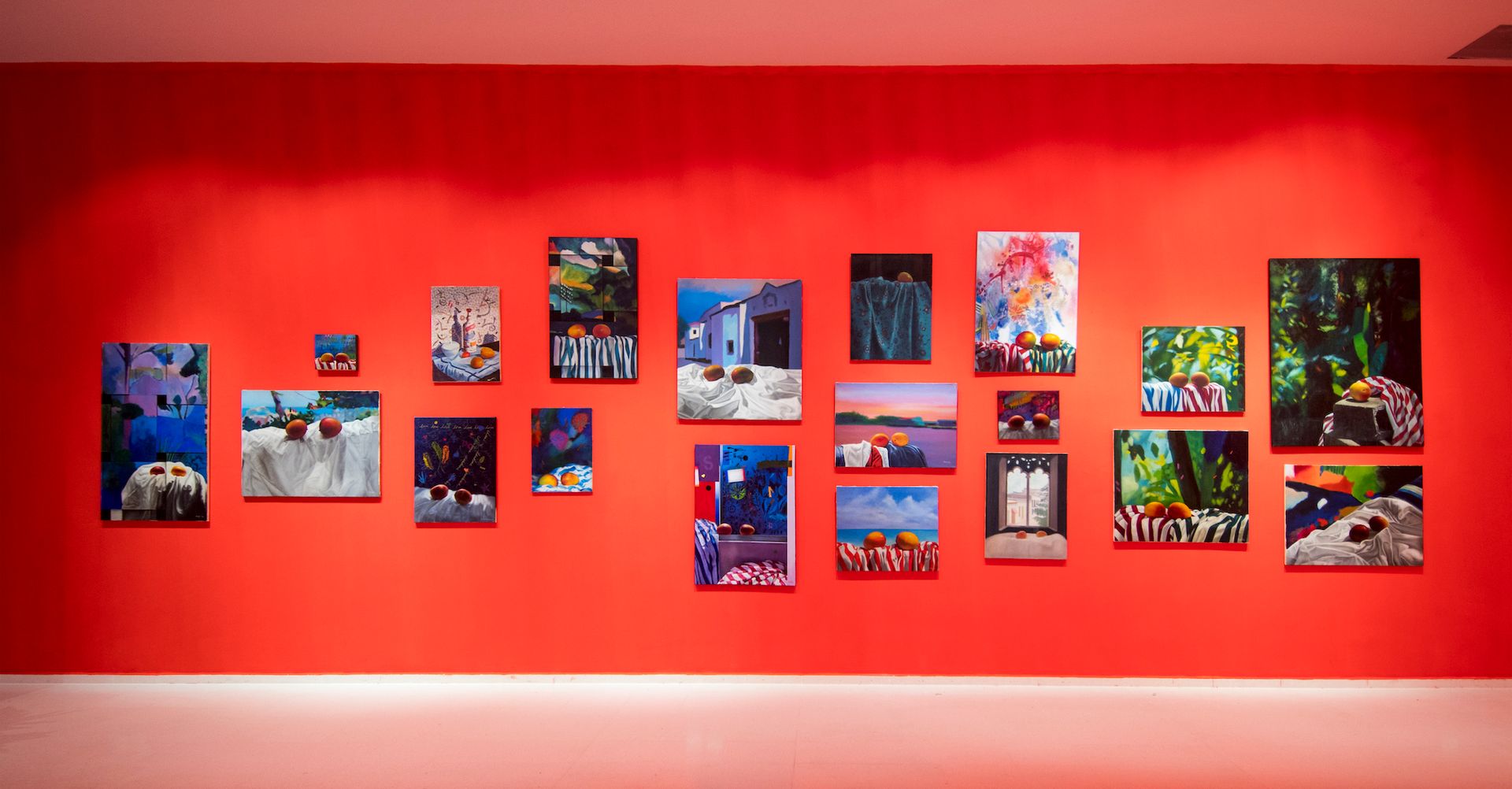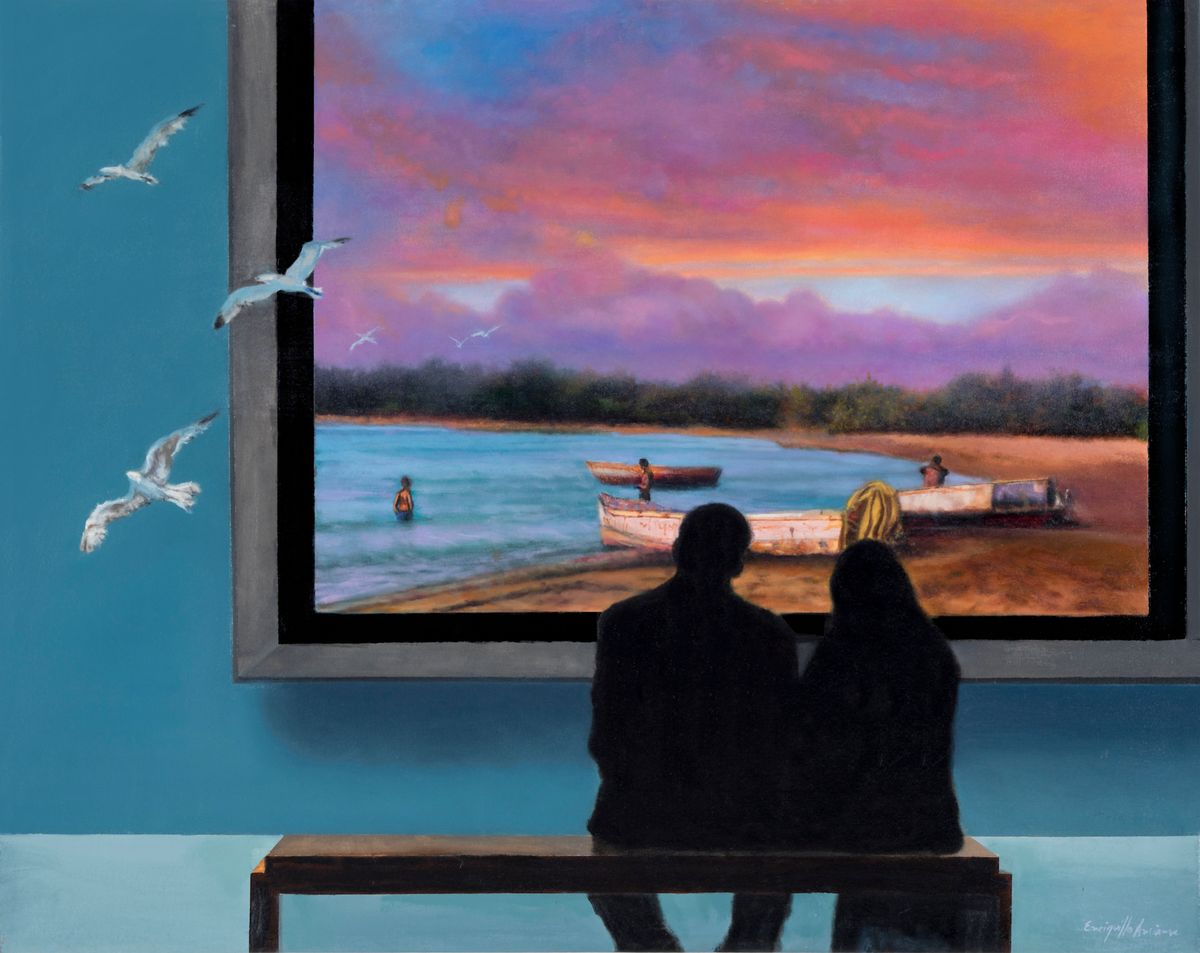In his first solo exhibition in 1984, Dominican painter Enriquillo Amiama officiated his life-long marriage to his art. At a small gallery in Santo Domingo’s Unesco-protected neighbourhood Zona Colonial, the then 22-year-old performed a matrimonial ceremony with an actress he hired to play the part of not only a muse but an embodiment of painterly determination. One critic described it as “a happening”, but most spectators believed they had attended a real wedding. In the 38 years since, Amiama’s marriage has produced around 700 works.
Despite exhibiting in France, Canada and the US, Amiama is only a household name in his home country. After starting out with geometric abstractions inspired by his background in engineering, he focused on mango-filled still lifes that would eventually determine his visual lexicon. With two mangoes in the foreground, each painting opens a portal to backdrops rendered as narrative potentials, some depicting distant landscapes or, occasionally, abstract compositions. After seeing Mexican painter Martha Chapa’s depictions of apples, Amiama thought the fruit to represent the Dominican experience had to be tropical, but also sexual and colourful.

A work from Enriquillo Amiama's series of still lifes with mangoes Courtesy the artist
“After a few experiments, I settled on mango—it has many colours and a ritual to eat,” the artist says. “Pairing them means coupling—a balance, and an invitation.”
The merger of meticulous hyperrealism and non-figurative experiments stemmed from a duality in Amiama’s training in the early 1980s. While studying at Santo Domingo’s National School of Fine Arts under abstractionists who had fled Europe, the artist, who calls himself “a terminal learner”, also took lessons from the Dominican painter Alberto Bass, who had returned after studying figuration at New York’s Arts Students League.
The pairing of tropical fruits over lushly draped Dominican flags in Amiama’s work speaks to both exoticisation through the colonial gaze and a cheeky homage to the still life symbolism in European painting. Along the way, he has also painted Jasper Johns-influenced Pop abstractions (“I went mad”, he remembers of the first time he saw Johns’s work, reproduced in a book), mural-scale juxtapositions of dense colours and female portraits. Two years ago, his journey came full circle with a return to still lifes.

A work by Enriquillo Amiama that references famous compositions by Jasper Johns Courtesy the artist
Despite this rich body of work, artistic trajectory and star stature in his homeland, the 60-year-old is not widely known outside the Dominican Republic. He has personally sold the majority of his paintings without gallery support, cultivating relationships with collectors, all the while rarely leaving his hometown, Santo Domingo, where he paints around ten hours a day. This lack of visibility was the main draw when New York-based advisor and curator Maria Brito took on the task of organising Amiama’s recently-opened retrospective at Santo Domingo’s Museo de Arte Moderno.
After connecting through Instagram, the artist ordered Brito’s recently-published book How Creativity Rules The World, which eventually led to an invitation to curate Amiama’s first exhibition in his native country in 14 years.
“The art market has two obsessions: fresh talents out of MFAs and long-overlooked discoveries—but what about the mid-career artists?” Brito asks. “There are many ways to be successful, and an underdog is always exciting, as well as challenging, to introduce as long as the work is smartly-executed,” she adds. “Posthumous discovery of an artist like Amiama would be a shame.”

A salon-style installation of Enriquillo Amiama's mango still lifes at the Museo de Arte Moderno in Santo Domingo, Dominican Republic Courtesy the artist
Built in 1970s in a Brutalist style, the Museo de Arte Moderno is among the largest dedicated to Modern art in the Caribbean and also hosts the National Biennial of Visual Arts, in which Amiama participated in 1983.
The journey has been twofold for the artist and the Venezuelan curator. While selecting the show’s 65 paintings, Brito discovered her great-great-grandfather was the Dominican painter Leopoldo Navarro, whose fame in the late-19th century led to his name being given to a street just blocks away from the museum where Amiama’s work now holds court.
- Enriquillo Amiama: XXI, until 25 August, Museo de Arte Moderno, Santo Domingo, Dominican Republic.


